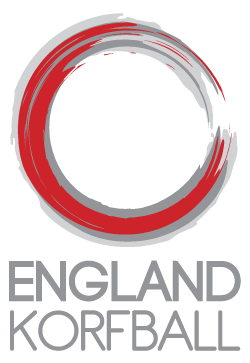Korf-What?
At the end of World War II a korfball demonstration tour of England was made by an Anglo-Netherlands group. This also led to a visit to the Netherlands by teachers and others interested in finding out more about korfball. One of the stops that the original tour made was to Mitcham and that led to Mitcham KC forming, whilst Wandsworth KC and Croydon KC also started at this time (1946).
On July 31st 1946 The British Korfball Association (BKA) was founded, and BKA affiliated to the International Korfball Federation on September 21st 1946. A London League started in 1948, featuring 2 teams from each of the aforementioned clubs, Bec KC joined the League shortly after this.
It was 1956 before a second and third division of the league was possible, with new clubs starting in Hornchurch, Edmonton and Bromley…and further afield in Sheffield, Derby and Folkestone -quite some travelling for the clubs concerned. Unfortunately these new clubs did not last very long, handicapped by the travelling.
In the season 1957-58 the BKA introduced a cup competition. Until 1961 korfball was played by teams of 12 players, divided into 3 sections of 4 players per team. This was an outdoor game of 2 x 45 minutes on grass pitches 90 x 40 metres.
1961 saw the introduction of what is now known as indoor korfball but at that time it was known as ‘micro korfball’ and it originated in the Netherlands. A team now had two sections, 4 players in each.
The first indoor competition was a summer league in the 1970s, played at the National Sports Centre at Crystal Palace, London.
In 1977 a London League took place outdoors in the Autumn and the Spring, with an indoor league during the winter months. Ultimately the outdoor league ceased and korfball become almost exclusively an indoor game in the UK, apart from summer tournaments where many clubs come together to play essentially ‘social’ matches throughout the day.
The 1970s saw more progress, with clubs forming in Swindon and Essex (neither lasting very long), whilst considerable progress was made in Kent. The Kent Korfball Association was formed in 1975, featuring several clubs. An important development started in the 1980s, with a number of universities beginning to play, led by the University of London. This initiative has led to many new clubs starting as a result of graduates wishing to continue in the sport and finding it necessary to start a club. It has played a particular role in the geographic spread of the sport. The British Student Korfball Association was formed in 1990.
During the 1980s the Surrey Korfball Association was founded, with a league of clubs in Woking, Guildford, Redhill, Leatherhead, Elmbridge and Farnham. This league was not to last. New Area Associations also started in Norfolk, Central England and the South West between 1989 and 1993.
The BKA created a National league in 1994, featuring clubs from London, Kent and Surrey. This league now is the top of a pyramid of local leagues throughout England.
Within England clubs are now spread from Exeter and Bristol in the South West, to Manchester and Leeds in the North, to Norwich and Cambridge in the east and Maidstone in the South East.
In 2006, England, Scotland and Wales separated into their own national organisations.
At the World Championships, Great Britain (now England) finished in 3rd place in 1987 and 1999, and 4th place in 1978 and 1984. In 2003, 2007 and 2011 England was in 5th place or sometimes 7th, however it is important to note that the growth of korfball globally has brought many more strong nations to the Championships.
In 2006, the English Korfball Association (EKA) was formed after the BKA agreed to devolve into three home country organisations. From 2006 to 2011, the EKA focused on improving its domestic competition structure and international performance. This was underpinned by an extensive development review to ascertain key development priorities to define the required competition structure that increased participation and improved the base of elite players.
This led to two main activities; firstly the creation of the England Korfball League which consisted of the country’s top 10 teams which had a mandate of raising playing standards and widening geographical representation of the league. Secondly, through a mixture of private initiatives and the NGB-led development programmes, the EKA produced a series of World Class Athletes on limited resources at senior and at under 16 level.
Currently, England Korfball are working towards achieving the priorities of the 2012-2016 Strategic Plan in order to create sustainable growth that builds on current success.



